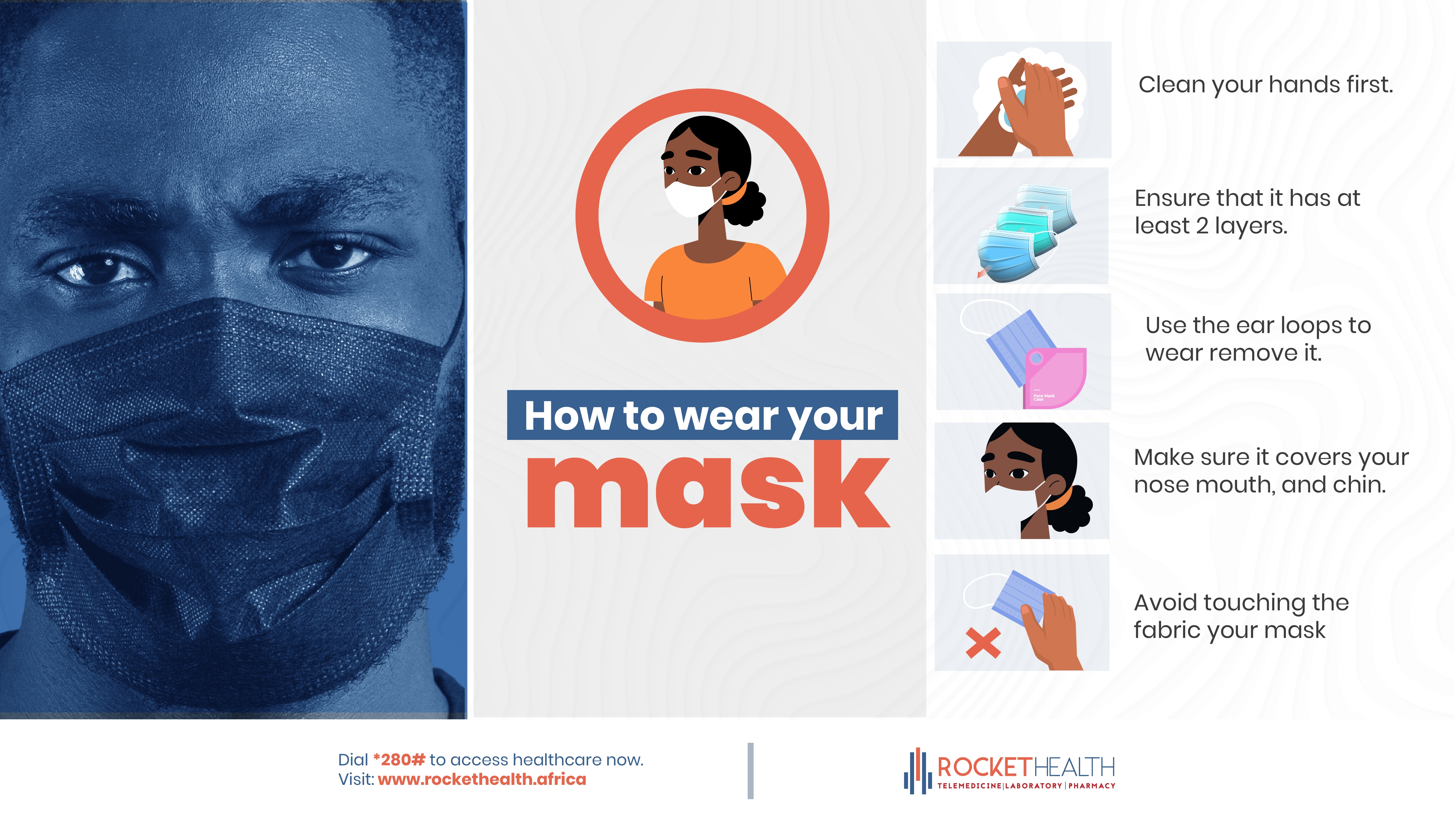Everything about the way we live and go about our day-to-day life has changed over the past two years due to the COVID-19 pandemic.
In 2019, leaving your house meant having just your keys, wallet, and other small entities. Now, a mask is one of the essentials.
In 2020 when the pandemic had just hit Uganda, we did not appreciate the relevance of wearing a mask. But now, everything has changed and the mask is a must-have. Sick or not.
Here, we break down how and why you should wear a mask.
So, what is a mask?
A mask is a cloth-like object that is worn on the face over the nose and chin, typically for protection. There are two types of face masks we are encouraged to wear to prevent the transmission of the virus. That is; the cloth mask and medical mask.
When and where do I wear a mask?
It is advisable to wear a mask whenever we are in a public setting. This could be when we use public transport or when we are around a lot of people. We should also wear one when are taking care of a sick person with symptoms of COVID-19 at home or one who has tested positive for COVID-19.
Who should wear a mask?
Children aged two and older plus adults should always wear a mask in public settings, and when around people with COVID-19 symptoms like cough, running nose, high temperature, and fever.
Anyone who has the COVID-19 symptoms should also wear a mask at all times to avoid spreading the virus to other people. Medical personnel should also wear masks especially when they are around patients.
Why should I wear a mask?
Wearing a mask helps protect you and those around you. COVID-19 spreads mainly from person to person through respiratory droplets. Masks are a simple barrier to help prevent your droplets from reaching others. Even when you do not feel sick, you should wear a mask because science shows that some people with COVID-19 never develop symptoms.
How do I wear your mask?

Before you wear your mask, sanitize or wash your hands. This is to avoid the transference of germs from your hands to your mask and potentially to your mouth and nose.
When wearing a mask, make sure it covers your nose, mouth and chin. If your mask is loose, it allows particles that contain the virus to escape when you cough or sneeze.
After you take off your mask, sanitize or wash your hands and remove the mask by pulling the ear flaps to the front. If it is a clinical mask, dispose it at the end of the day in a trash can. Clinical masks are for single use only. If you use a cloth mask, wash and hang it dry.
Remember, a mask is NOT a substitute for social distancing, vaccination and hand washing, or sanitizing. Let’s work together to stop the spread of the coronavirus. Let’s wear our masks.


